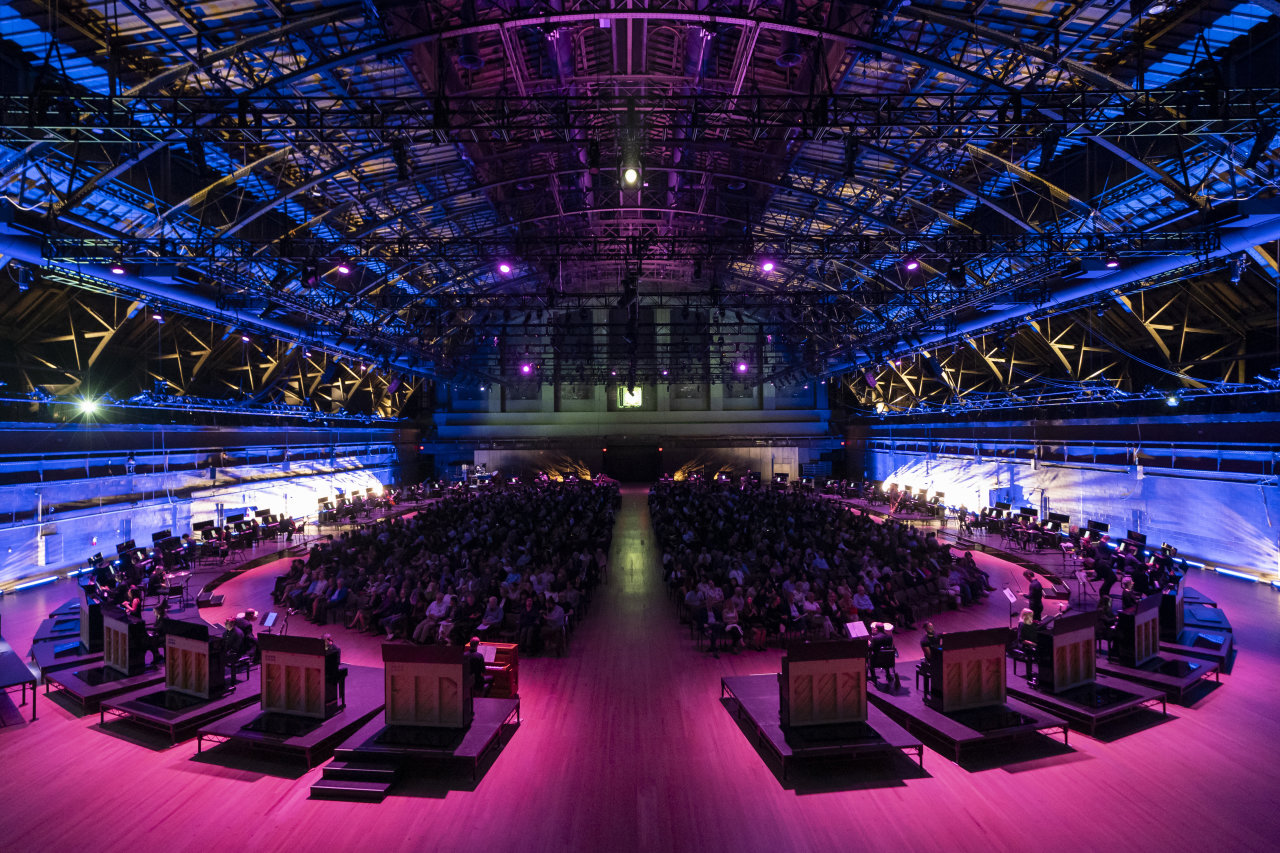
A Unique Sonic Experience
As I exited the Park Avenue Armory after attending a performance of Georg Friedrich Haas’s “11,000 Strings” on a Saturday afternoon, my friend asked what I thought of the experience. At that moment, I found it difficult to articulate my thoughts, not just because of the overwhelming nature of the piece, but also due to the sheer complexity of the soundscape. However, over the following days, I’ve reflected on the performance and arrived at several different perspectives—each revealing a new layer of meaning.
“11,000 Strings” is an ambitious 66-minute composition that was performed in a vast oval arrangement of instruments and musicians, surrounding an audience of 1,300 people. The performance featured 50 upright pianos, each slightly out of tune, along with a scattered chamber orchestra of 25 other instruments known as the Klangforum Wien. Each pianist used a tablet computer to receive individual musical instructions, ensuring that no two audience members experienced the same sequence of sounds. I was seated between the harpist and a bassoonist, both of whom were exploring the outer limits of their respective instruments. Despite the individual variations, the circle of pianos created a unified backdrop that helped hold the entire piece together. This performance marked the American premiere of the work, which will conclude soon.
Georg Friedrich Haas, a 72-year-old Austrian-born professor of composition at Columbia University, has clearly drawn from a wide range of 20th-century and contemporary music. Yet, “11,000 Strings” is unmistakably his own creation. It feels like encountering a massive, friendly alien being that you never imagined before, yet now embraces you from all sides. While it’s hard to pinpoint a single influence, some of Karlheinz Stockhausen’s early spatial works, such as “Carré,” come to mind. However, Haas’s piece is more accessible than most of Stockhausen’s compositions, leaning toward consonance rather than heavy chromaticism. The piece opens with a C major chord, and later, there are moments that seem to echo Tchaikovsky’s “Waltz of the Flowers.” At one point, it even sounded as though a pianist was making a grand entrance into a Rachmaninoff concerto amidst a roaring din.
The sheer number of pianos inevitably brings to mind Conlon Nancarrow, who composed complex pieces for player pianos. His work transformed a once-popular parlor instrument into something entirely new, using machine-driven performances that surpassed human capabilities. Similarly, “11,000 Strings” occasionally evokes the soundscapes of Olivier Messiaen, with its bird-like melodies and ethereal textures. There were also moments that reminded me of everyday sounds—fog horns, dental drills, splashes of water—and towards the end, a series of furious glissandos created a dizzying whirl of sound. The pianists wore heavy gloves during this section, likely to preserve their hands for future performances.
On my first listen, I didn’t perceive “11,000 Strings” as particularly linear. Instead, it felt like a loosely structured meditation that arrives, shimmers, and then fades away. Around the 40-minute mark, I couldn’t tell how much of the piece remained, but I was content wherever I was, happily lost in the experience. There are no traditional tunes here; the piece doesn’t adhere to a steady musical grammar. Imagine a series of cloud-like sounds passing over and through you.
Some listeners might find parts of the performance deafening, but as someone who grew up with rock ’n’ roll, the early Philip Glass Ensemble, and noisy cafeterias, I found the volume unbothering. The performance was authoritative, with many of the pianists either dedicated new-music enthusiasts or students from prestigious institutions like Mannes, Juilliard, and NYU. The Klangforum Wien, a renowned ensemble, has performed globally and has over 600 world premieres to its credit.
Haas has dismissed any experimental label for this piece, stating in a preface that it is “music for the people who play the piece and for the people who hear it.” He emphasizes that “you don’t experiment with people.”
“11,000 Strings” achieves its most profound impact in live performance. I hope to hear it again someday and continue to explore its many layers. While the YouTube version offers a glimpse into this remarkable work, listening in a large room is highly recommended.

Post a Comment